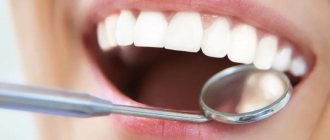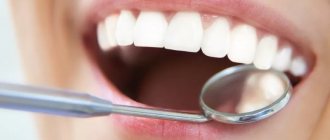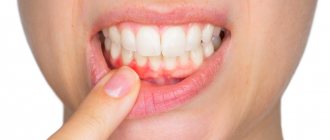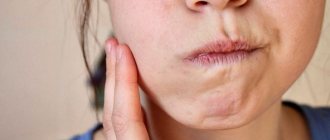Indications for use
The ointment copes well with inflammatory processes and draws out pus. The main indication for use is the formation of purulent wounds.
The product treats wounds and boils. Also used for severe forms of hemorrhoids, herpes, purulent skin rashes. Can be used as local therapy for inflamed lymph nodes.
The patient is prescribed anti-allergy medications, vitamins, and calcium gluconate. In advanced cases, an operation is performed to open the pustules and carry out antibacterial treatment.
Some doctors prescribe ointment for a runny nose and sinusitis, when the problems are caused by a microbial infection.
The ointment showed excellent results in the treatment of purulent formations in the oral cavity. Levomekol will help fight stomatitis, periodontal disease, and inflammatory reactions. Also used as a pain reliever when removing or inserting teeth.
The appearance of a “dry socket” after tooth extraction
Dry socket after tooth extraction is one of the complications of the dental procedure. Dry socket may affect older people, smokers, and women taking birth control pills. Sometimes a blood clot does not form at the site of the tooth and bone may be exposed, which slows down healing. 3-4 days after the dental procedure, a dull pain appears, which can be either acute or tolerable. The pain often seems to radiate towards the ear. A dry socket can cause bad breath or a taste in the mouth. Such a hole looks like this: there is no blood or pus on it, but the bone is exposed. In this case, you should consult a doctor to treat dry socket. To relieve pain, the doctor applies a bandage soaked in medicine to the dry socket.
Up to contents
Instructions for use
The ointment can be used by adults and children from 3 years of age. The product is applied to the open wound using sterile cotton wool and secured with a bandage. You can inject ointment into a purulent wound using a syringe.
The dressing must be done every day until the pus is completely removed from the wound.
If the affected surface is large enough, then the permissible dose per day should not be more than 3 g.
The ointment should be used within 4 days from the moment of infection. In severe conditions, the course of treatment can be extended to a week. With prolonged use, osmotic shock may occur in healthy cells.
For sinusitis, ear inflammation and runny nose
If you have a runny nose, soak a cotton pad with ointment and insert it into your nasal passages. If possible, keep for 3-4 hours. For ear inflammation and sinusitis, you need to make a tourniquet out of gauze, soak it in ointment and insert it into the ear for 8-12 hours.
In dentistry
When a tooth is removed and the oral mucosa is damaged, you need to rub the ointment with light circular movements into the problem areas. You can use the ointment no more than 3 times a day.
For hemorrhoids
Before applying the product, you need to rinse the anal area with water at room temperature and dry with a towel. After this, you can apply the ointment.
For burns
Levomekol has proven itself well for burns of varying severity. In severe cases, the ointment is only an aid and cannot replace general treatment. Before applying the ointment, the affected area of the body should be washed and covered with a napkin treated with ointment. The bandage needs to be changed 4 times a day.
For acne
Acne appears as a result of bacterial and infectious infection. Dermatologists recommend applying a thin layer of ointment to small rashes and leaving for 3-4 hours. Afterwards, rinse with water. In this way, acne can be treated for no longer than 12-14 days. In case of isolated rashes, it is better to cover the treated area with a gauze bandage.
Causes of the disease
Traumatic tooth extraction.
Alveolitis is often caused by a traumatic dental procedure. Injury can occur if a tooth is removed in fragments (parts). During the operation, sometimes the gums are damaged or the bone walls of the socket are partially destroyed. In this case, healing takes longer compared to uncomplicated removal and is often accompanied by the appearance of alveolitis.
Foreign particles entering the hole.
Sometimes pain after tooth extraction occurs as a result of the contents of the carious cavity, dental plaque, fragments of the extracted tooth, or bone fragments of the alveoli entering the socket. In addition, the cause of pain and alveolitis can be the destruction of a blood clot.
Failure to maintain socket hygiene.
Healing of the alveoli occurs due to the formation of a blood clot. This biological barrier protects the socket from infections and inflammation. After some time, the clot is replaced by newly formed bone tissue. It is not recommended to eat rough, hot or spicy foods within 24 hours after a dental procedure, as this can destroy the blood clot. In addition, brush your teeth and rinse your mouth with caution. Failure to follow the dentist's recommendations can lead to blood clot disruption, alveolitis and pain after tooth extraction.
Presence of infection.
Sometimes the cause of dental surgery is chronic periodontitis - inflammation of the tissues that surround the root. If you have had a tooth removed and its socket hurts, this may be caused by an infection getting into it.
Up to contents
special instructions
It is better to avoid simultaneous use with drugs that inhibit hematopoiesis.
After using the product, the reactive susceptibility of the skin may increase, which is why hypersensitive reactions may then appear at the time of using the ointment.
If you need to use the ointment for longer than a month, you will need to take a peripheral blood test.
The drug does not in any way affect the ability to drive a vehicle or operate other dangerous machinery.
There are no cases of negative effects when taken in parallel with other drugs.
If the ointment gets on the mucous membranes, you need to rinse them well with water. If the ointment gets inside, you need to rinse the stomach with activated charcoal.
What to do if a tooth is removed
Stop the bleeding.
If you have had a tooth removed, your doctor will tell you in detail what to do in the first hours after the operation. For some time after the procedure, blood may flow from the hole. To stop bleeding, you need to place a cotton swab on the empty alveolus, bite it firmly and hold it there for 45 minutes. If bleeding continues, you should contact your dentist to prescribe a course of treatment after tooth extraction.
Do not injure the blood clot.
The blood clot that forms at the site where the tooth was is important for healing, so care must be taken to avoid traumatizing it.
The clot can be damaged by hard food, a toothbrush or a toothpick. Brushing your teeth is a must, but it should be done carefully. If oral hygiene is not maintained, the infection accumulates in the oral cavity and can cause pain and inflammation of the alveoli, which requires the doctor to prescribe treatment after tooth extraction.
Do not eat hot or cold food.
During the day you should not take very cold or hot food or drinks. Temperature changes lead to narrowing and dilation of blood vessels, which can cause bleeding from the socket. For the same reason, doctors do not recommend going to the bathhouse, taking a hot bath or shower. It is also not advisable to drink alcoholic beverages on the first day after a dental procedure.
Up to contents
Complications: inflammation of the socket, or alveolitis
Inflammation occurs due to infection entering the wound. You should especially beware of it if the process of tooth extraction was traumatic and difficult. Most often the problem occurs for the following reasons:
- disturbance of a blood clot in the wound;
- ingress of tooth fragments or foreign particles into it;
- insufficient sanitation of the resulting hole;
- violation of hygiene recommendations.
Signs of alveolitis may occur 2-3 days after surgery. It is impossible to confuse them with anything. These include pain, inflammation, increased body temperature, an unpleasant odor, and even the discharge of pus. If only one symptom appears, you still need to urgently go to a specialist: the problem will not go away on its own, but will only get worse.
The maximum that a patient can do to avoid complications is to follow all the surgeon’s recommendations, including hygiene ones. But do it in moderation. Take care of yourself and your health!
Why does the tooth socket hurt so much after a difficult extraction?
Six days ago, the twenty-sixth tooth was removed, it seems from the top left, without flux, it simply split between the roots and there was already perforation (the gums began to grow in), so it began to hurt, stuffing itself with food debris.
Removal, as the surgeon said, was difficult, because the roots were large. I fiddled with different tools for about 15-20 minutes until I removed it completely, piece by piece. After removal, it began to hurt, even more than before, radiating to the front. Was saved by Ketarol. Three days later, I went to the doctor to see how things were going. I took a picture at the same time, he looked and said that everything was fine in the picture, and I didn’t see anything special there, like a cyst or anything else.
After that, he looked at the hole and cleaned it, removing the blood clot that was there. Apparently he didn’t like something, or there was suspicion of alveolitis. Then he put the medicine there and put a tampon on it. After another day, he fell out of there along with the medicine, and the pain did not subside. The hole turned out to be dry and I did not observe any signs of healing, such as a fibril film.
I applied again, only there was a different surgeon. This one looked, said there was no obvious alveolitis, put a tampon with iodoform again, like he said, it should get better, but it may hurt for another week. It turns out that he also suggested eating Ketarol. Already at home, the tooth began to ache again, only as for me - even more, and radiating to the front teeth, pressing on them and a little higher, on the palate, I felt pain.
I thought that maybe the tampon was starting to hurt more and took it out. In this I was stupid, of course, the hole now remained open and dry. There is no swelling or redness. After that, I tried to rinse once with furatsilin, apply Levomekol, checked, maybe there was caries somewhere on the front, and the doctor looked at them earlier - everything was intact, nothing was swollen.
In the end, today I went to the same doctor who cleaned the hole for the first time. He looked, poured an antiseptic into it with a syringe and again inserted a tampon with medicine, deeper than that. He said that the hole was healing poorly, if it didn’t get better on Monday (the ninth day after removal), for examination. Now it seems that the pain has become even worse (I want to pull out the tampon), it still radiates to the front teeth, as if the entire upper left part of the jaw already hurts.
What exactly could I have? Why is there such pain? Maybe I should take a course of antibiotics and which ones?
Naturally, complex removal involves some discomfort, and possibly pain for several days. Firstly, it was necessary to rinse the mouth in the form of baths several times a day. The painkiller may be Nimesil, not Ketarol. If there is a suspicion of alveolitis, then naturally, antibiotics should have been prescribed. Now, like this, without an examination, I cannot tell you that right now you need an examination.
We suggest you familiarize yourself with how healing occurs after wisdom tooth removal
Reviews
We have selected some reviews from people who have used Levomekol ointment:
- Olga . I know that Levomekol is often used in gynecology. I tried the product on myself 10 years ago, when my stitches came apart after childbirth. The ointment heals perfectly, as if it draws out all the sores. Reviews from other women will confirm my words. I used the ointment several times after opening boils on my teenage son. The wounds healed quickly, without complications.
- Tatiana . I am very pleased with the use of Levomekol ointment. I suffered from hemorrhoids for several years. As prescribed by the doctor, I used an ointment that relieved inflammation and killed pathogenic microflora.
- Anatoly. A few months ago I got a burn on my hand. The wound began to fester. With the help of Levomekol ointment, it was possible in a short time not only to cleanse the wound of pus, but also to significantly heal it.
- Sasha . The surgeon applied ointment with levomekol to my ripening boil, plus antibiotics (Augmentin), plus brewer's yeast. And there was no need to open it - the purulent core came out on its own, then dressings were applied and the wound cleared. So applying it to the ulcers helps soften the skin above the pus and breaks through on its own, without the help of a scalpel.
Efficacy of the drug
Levomekol will disinfect the treatment area and prevent infection from penetrating into the gum canals remaining from the roots. The ointment will effectively prevent dental defects caused by infection of the socket after tooth extraction:
After complex dental operations to remove several teeth or wisdom teeth, Levomekol will promote rapid healing of the gums.
In preparation for implantation and after removal of a wisdom tooth, Levomekol will prevent not only infection of the gums and canals, but also the mucous membranes located near the maxillary sinuses during removal in the upper jaw.
Contraindications and adverse reactions
It is not recommended to use the medicine for a long time, since it can provoke an allergy to the drug in the future due to sensitization of the mucous membranes. It is recommended to continue treatment for no longer than four days.
Side effects may include:
- allergic reactions;
- skin rashes;
- swelling, hyperemia;
- hives.
Detection of any side effects is an indication to discontinue the drug and consult a dentist. It is not recommended to use the ointment on your own after dental procedures - you should first clarify whether the use of Levomekol is advisable in an individual case.











